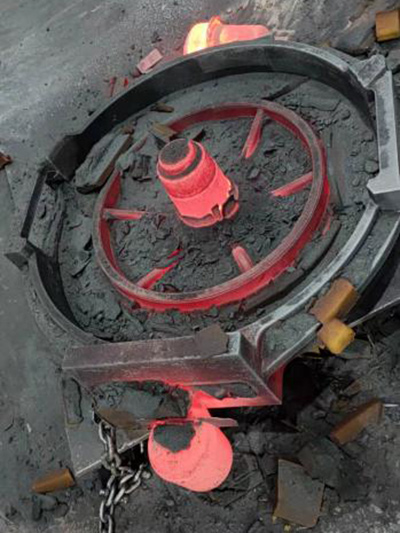Understanding the Prices of Casting Sand A Comprehensive Overview
Casting sand plays a crucial role in the metal casting industry, acting as a mold material for producing a variety of metal parts and components. The price of casting sand is influenced by numerous factors, including material composition, demand, quality, and market conditions. This article explores the various aspects related to casting sand prices, providing insight into the elements that contribute to fluctuations in the market.
What is Casting Sand?
Casting sand, also known as foundry sand, is predominantly composed of silica, which offers excellent thermal stability and permeability, making it suitable for forming molds in casting processes. Additionally, it is often mixed with other materials to enhance its properties, such as clay, which increases its binding capability. The right mixture of sand and additives helps in producing molds that can withstand the extreme temperatures and pressures encountered during metal casting.
Factors Influencing Casting Sand Prices
1. Raw Material Availability The primary ingredient in casting sand, silica, is abundant in nature, but its price can be affected by mining costs, extraction efficiency, and regional availability. Areas with rich silica deposits generally experience lower costs, whereas regions where silica is less abundant may encounter higher prices due to transportation costs.
2. Quality and Type of Sand Different casting processes require varying grades and types of sand. High-quality sand, such as that used in precision casting, is often more expensive due to the additional processing and higher purity levels required. Specialty sands, such as those treated for specific casting applications, can also carry a premium price tag.
3. Market Demand The demand for casting sand tends to fluctuate with the overall performance of related industries, such as automotive, aerospace, and construction. Economic growth can lead to increased production in these sectors, driving up demand and subsequently prices for casting sand. Conversely, during economic downturns, demand may decrease, resulting in lower prices.
casting sand price

4. Geopolitical Factors Global trade policies, tariffs, and geopolitical tensions can significantly impact the price of casting sand. For instance, if a major supplier of silica imposes trade restrictions or tariffs, it can disrupt the supply chain, leading to price hikes in importing countries.
5. Transportation Costs The locations of sand mines in relation to foundries influence transportation costs. Higher transportation fees, whether due to fuel prices or logistics challenges, can add to the overall cost of casting sand. Foundries located close to sand sources may enjoy lower prices due to reduced shipping expenses.
6. Technological Advancements Innovations in mining and processing technologies can optimize sand production, potentially reducing costs. The adoption of more efficient processing techniques and recycling methods can lead to price stabilization or even reductions over time.
Current Trends and Future Outlook
As of 2023, the demand for casting sand is expected to remain strong, particularly in the automotive and aerospace industries, which are continuously evolving with new technologies. The trend towards a circular economy is also gaining traction, with an emphasis on recycling and reusing foundry sand. This can impact pricing structures since recycled materials can provide cost-effective alternatives to new sand.
Moreover, as environmental regulations tighten, there is growing interest in developing more sustainable sand sourcing and processing methods. The integration of eco-friendly practices may initially raise costs but could result in long-term savings and a more stable market for casting sand.
Conclusion
In summary, the price of casting sand is a complex interplay of various factors, including raw material availability, quality requirements, market demand, geopolitical influences, transportation costs, and technological advancements. Understanding these elements can help industry stakeholders make informed decisions when sourcing casting sand. As the casting industry evolves and adapts to changing economic and environmental landscapes, monitoring these trends will be essential for anticipating price fluctuations and maintaining competitiveness in the market.
Post time:Říj . 11, 2024 06:56
Next:sand casting applications
